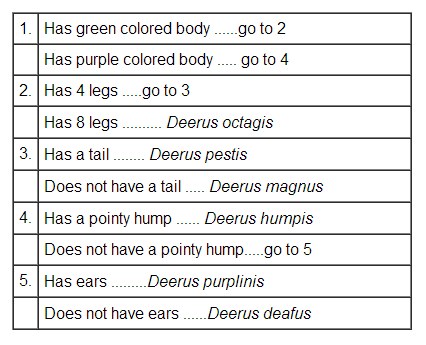The standard taxonomic naming system is important because it assigns a scientific name that helps identify organisms and avoids confusion between different languages. It also finds evolutionary relationships between species and leads to equal understanding of the classification system.
Binomial nomenclature is the scientific name. This begins with the genus taxon, which is capitalized, and then the species, which is lowercase.
Taxonomy pyramids are used to show how related species are and the different levels of organization.

The levels are…
- Domain
- Kingdom
- Phylum
- Class
- Order
- Family
- Genus
- Species
A dichotomous key is used to identify organisms.

A cladogram is a diagram based on the relationships of species.

The 6 Kingdoms:
- Eubacteria can be both heterotrophs or autotrophs. They are unicellular and prokaryotic.
- Archaebacteria can be both heterotrophs or autotrophs. They are unicellular and prokaryotic.
- Protists can be both heterotrophs or autotrophs. They can be both unicellular or multicellular and are eukaryotic.
- Fungi are heterotrophs. They are mostly multicellular and are eukaryotic.
- Plants are autotrophs, multicellular, and eukaryotic.
- Animals are heterotrophs, multicellular, and eukaryotic.
Heterotroph means that they consume food, while autotrophs make their own food.
Unicellular organisms have one cell, while multicellular have two or more cells.
Prokaryotes have no nucleus or membrane-bound organelles, but eukaryotes do.
